Long-tailed Duck
- February 19, 2024
- 0 comment
The Long-tailed Duck, scientifically known as Clangula hyemalis, is a captivating species of waterfowl renowned for its striking appearance and intriguing behaviors. These ducks inhabit the Arctic and subarctic regions during the breeding season, nesting in remote freshwater lakes and marshes. With their medium-sized bodies and distinctive long tails, Long-tailed Ducks are easily recognizable among other duck species. During winter, they migrate to coastal areas and open waters, where they form large flocks and forage for food.
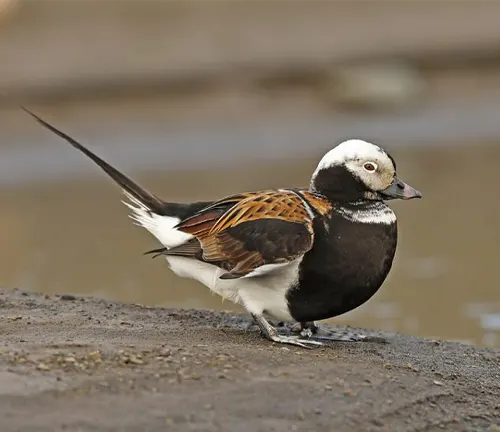
Long-tailed Ducks are proficient divers, capable of plunging to considerable depths in search of prey, which primarily includes small fish, crustaceans, and mollusks. Their breeding habits involve constructing nests on the ground, where females diligently incubate their eggs while males stand guard. Despite their adaptability to cold environments and impressive diving skills, Long-tailed Ducks face various threats, including habitat loss, pollution, and climate change. Conservation efforts aim to protect their habitats and ensure the sustainability of their populations.
Overall, Long-tailed Ducks serve as fascinating ambassadors of Arctic wildlife, captivating observers with their beauty and resilience.
| Attribute | Description |
|---|---|
| Scientific Name | Clangula hyemalis |
| Common Name | Long-tailed Duck |
| Habitat | Arctic and subarctic regions, freshwater lakes, marshes |
| Size | Medium-sized |
| Plumage | Black, white, and gray feathers |
| Distinctive Feature | Long tail |
| Migration | Coastal areas and open waters during winter |
| Feeding Habits | Proficient divers, prey includes small fish, crustaceans |
| Breeding | Ground nests, incubation period around 3-4 weeks |
| Threats | Habitat loss, pollution, climate change |
| Conservation Status | Not endangered, but faces conservation challenges |
A Fascinating Arctic Wanderer

Long-tailed ducks, also known as Clangula hyemalis, are captivating creatures known for their striking appearance and remarkable behaviors. In this article, we delve into the world of long-tailed ducks, exploring their physical characteristics, habitat, behavior, and interactions with humans.
Physical Characteristics
Plumage
The plumage of the Long-tailed Duck is visually striking and distinct. During the breeding season, males display vibrant colors with striking contrasts of black, white, and gray. Their heads are adorned with glossy black feathers, while their bodies showcase a mix of white and gray tones. The most prominent feature is their long, elegant tail feathers, which extend beyond the body and add to their aesthetic appeal. In contrast, females have more subdued plumage, characterized by mottled brown tones that provide camouflage in their natural environment. This sexual dimorphism in plumage helps differentiate between male and female Long-tailed Ducks.
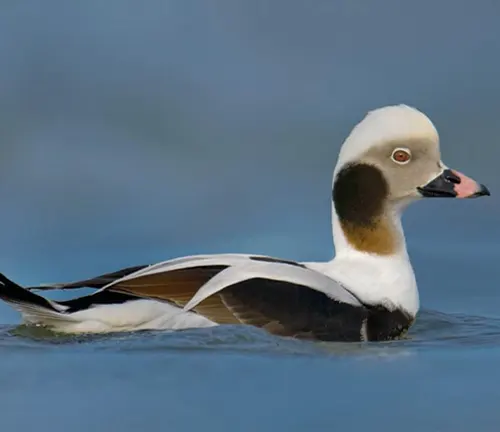

Body Size
Long-tailed Ducks are medium-sized waterfowl with a sleek and streamlined physique. On average, males are slightly larger than females, though both sexes exhibit similar body proportions. Adult males typically measure around 16 to 20 inches (40 to 50 centimeters) in length, while females are slightly smaller, ranging from 14 to 18 inches (35 to 45 centimeters). Despite their relatively modest size, Long-tailed Ducks possess a graceful presence both on water and in flight. Their slender bodies and long tails contribute to their distinctive silhouette, making them easily recognizable among other duck species.
Habitat and Distribution
Breeding Grounds
Long-tailed Ducks choose their breeding grounds carefully, typically favoring remote and pristine environments in the Arctic and subarctic regions. These breeding grounds often consist of freshwater lakes, marshes, and tundra habitats with suitable nesting sites. The ducks prefer areas with ample vegetation for nesting cover and nearby water bodies for foraging. The remote nature of their breeding grounds helps minimize disturbances from human activities, providing a conducive environment for successful reproduction. Long-tailed Ducks exhibit strong fidelity to their breeding sites, returning to the same locations year after year to raise their young.
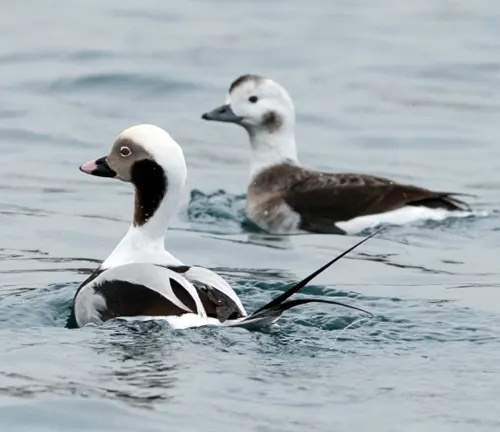
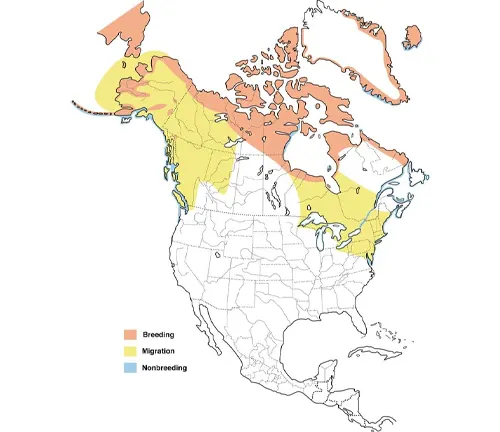
Migration Patterns
Migration plays a crucial role in the life cycle of Long-tailed Ducks, particularly during the winter months when temperatures drop in their breeding grounds. As the seasons change, Long-tailed Ducks embark on long-distance migrations to coastal areas and open waters, where they spend the winter. These migration patterns vary depending on the geographic location of their breeding grounds. In North America, for example, Long-tailed Ducks migrate to coastal regions along the Atlantic and Pacific coasts, as well as the Great Lakes. During migration, they form large flocks and may travel thousands of miles to reach their wintering grounds. These migratory movements are essential for accessing abundant food resources and avoiding harsh winter conditions in their breeding habitats.
Behavior and Feeding Habits
Diving Behavior
Long-tailed Ducks are renowned for their remarkable diving abilities, which are essential for accessing their preferred prey underwater. These ducks are proficient divers, capable of plunging to considerable depths in search of food. They utilize their streamlined bodies and webbed feet to propel themselves underwater with remarkable agility and speed. Long-tailed Ducks can remain submerged for extended periods, often staying underwater for up to a minute or more while foraging. Their diving behavior is characterized by rapid descents followed by graceful ascents to the surface, where they briefly rest before diving again. This diving prowess enables Long-tailed Ducks to exploit a wide range of aquatic habitats and access prey that other waterfowl may not reach.
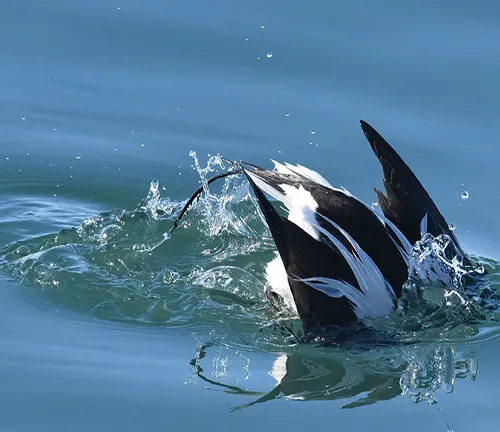
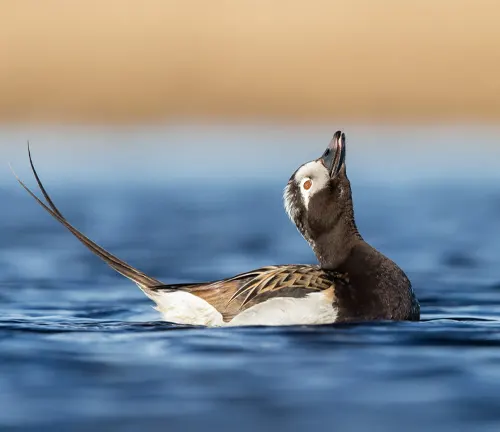
Diet
Long-tailed Ducks have a diverse and adaptable diet, consisting primarily of aquatic organisms found in their freshwater and marine habitats. Their diet includes a variety of small fish, such as capelin, herring, and smelt, which they capture using their agile diving skills. Additionally, Long-tailed Ducks feed on a range of invertebrates, including crustaceans like shrimp and amphipods, as well as mollusks such as mussels and clams. They may also consume aquatic insects and plant matter, particularly during the breeding season when protein-rich food is crucial for raising their young. The ability of Long-tailed Ducks to switch between different food sources depending on availability and seasonal changes contributes to their adaptability and survival in diverse aquatic environments.
Reproduction
Nesting Habits
Long-tailed Ducks exhibit distinct nesting habits tailored to their Arctic breeding grounds. Typically, they construct their nests on the ground, often concealed among vegetation or rocky outcrops for protection against predators. The female selects a suitable nesting site and builds a shallow depression lined with down feathers and plant material to cushion the eggs. Long-tailed Ducks prefer nesting in secluded areas away from human disturbance, such as on islands or remote shores. This nesting strategy helps minimize the risk of predation and disturbance, providing a secure environment for incubating the eggs.
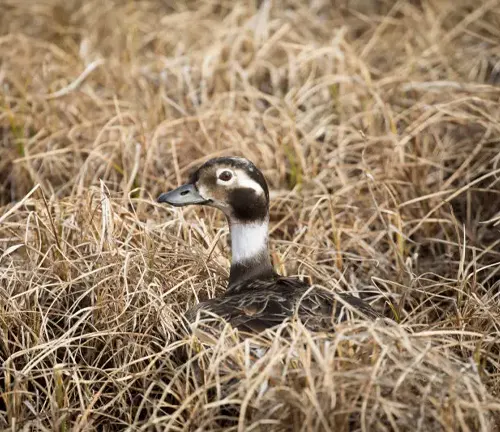

Egg-laying and Incubation
After selecting a nesting site, the female Long-tailed Duck lays a clutch of eggs, usually numbering between six to nine eggs, although clutch sizes can vary. The eggs are typically olive to buff-colored, providing camouflage against the surrounding environment. Once the clutch is complete, the female begins incubating the eggs, a process that lasts approximately three to four weeks. During incubation, the female remains dedicated to keeping the eggs warm and protected, rarely leaving the nest except for brief foraging trips. The male may stand guard nearby, keeping watch for potential threats and predators. Incubation is a critical stage in the reproductive cycle of Long-tailed Ducks, ensuring the development and hatching of healthy ducklings.
Conservation Status
Threats
Long-tailed Ducks face various threats to their survival, primarily as a result of human activities and environmental changes. One of the significant threats is habitat loss and degradation due to coastal development, pollution, and disturbance of nesting sites. Destruction of wetlands and coastal areas reduces the availability of suitable breeding and foraging habitats for Long-tailed Ducks, impacting their reproductive success and overall population health.
- Pollution poses another significant threat to Long-tailed Ducks, particularly contamination of their marine habitats from oil spills, chemical pollutants, and marine debris. Exposure to pollutants can affect water quality, food availability, and the health of Long-tailed Ducks, leading to adverse effects such as reduced reproductive success, impaired immune function, and increased mortality rates.
- Climate change also poses a significant threat to Long-tailed Ducks, affecting their breeding habitats, migration patterns, and food availability. Rising temperatures, changing precipitation patterns, and sea-level rise can alter the distribution and abundance of prey species, disrupting the delicate balance of ecosystems on which Long-tailed Ducks depend. Additionally, climate change may exacerbate other threats such as habitat loss and pollution, further jeopardizing the survival of Long-tailed Duck populations.
- Human activities such as hunting, disturbance from recreational activities, and bycatch in fishing gear also contribute to the decline of Long-tailed Duck populations in certain areas. Sustainable management practices, habitat protection measures, and conservation efforts are crucial for mitigating these threats and ensuring the long-term survival of Long-tailed Ducks in their natural habitats.
Conservation Efforts
Efforts to conserve Long-tailed Ducks involve a combination of research, habitat protection, and management strategies aimed at addressing the various threats facing these birds. Conservation organizations, government agencies, and local communities collaborate to implement initiatives that safeguard Long-tailed Duck populations and their habitats.
One key aspect of conservation efforts is habitat protection. This involves identifying critical breeding, wintering, and stopover sites for Long-tailed Ducks and implementing measures to safeguard these areas from development, pollution, and disturbance. Protected areas such as wildlife refuges, marine reserves, and coastal sanctuaries provide important habitats for Long-tailed Ducks and other waterfowl, ensuring they have access to suitable breeding and foraging grounds.
Research plays a crucial role in understanding the ecology, behavior, and population dynamics of Long-tailed Ducks. Scientists study migration patterns, breeding biology, and habitat use to identify key conservation priorities and inform management decisions. By monitoring Long-tailed Duck populations and assessing the impacts of threats such as habitat loss and pollution, researchers can develop targeted conservation strategies to mitigate these risks and support population recovery.
Different Species
Clangula hyemalis hyemalis
This subspecies, commonly known as the European Long-tailed Duck, breeds in northern Europe and western Siberia. It typically has darker plumage compared to other subspecies.
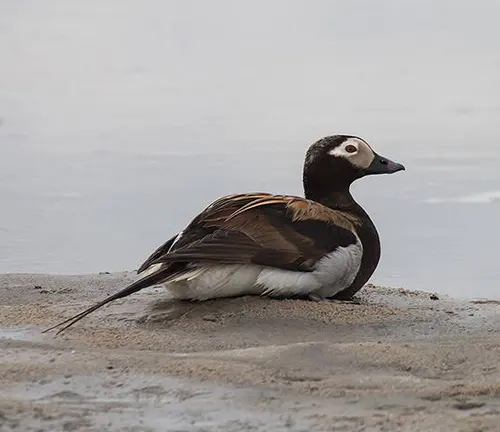
Clangula hyemalis garmany
The North American Long-tailed Duck, also known as the Eastern Long-tailed Duck, breeds in the Arctic regions of North America. It is the most widespread subspecies in North America.
Clangula hyemalis pacifica
The Pacific Long-tailed Duck is found breeding along the coast of eastern Siberia and parts of Alaska. It is characterized by its lighter plumage and slightly different vocalizations.
Clangula hyemalis vegae
The Siberian Long-tailed Duck, also known as the Western Long-tailed Duck, breeds in eastern Siberia and parts of northern Japan. It has a distinctive appearance, with variations in plumage coloration.
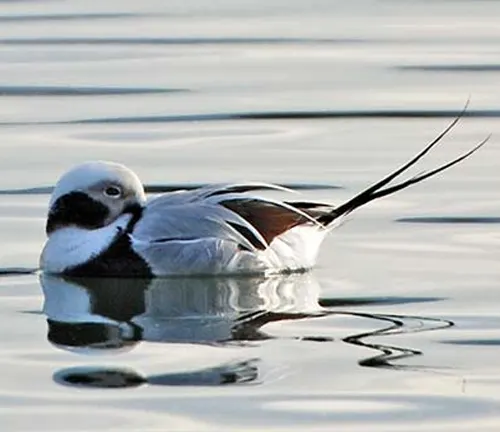
Frequently Asked Questions (FAQs)
- Are long-tailed ducks endangered?
This question addresses the conservation status of Long-tailed Ducks and whether they are considered threatened or endangered species. - What is the lifespan of a long-tailed duck?
This inquiry seeks information about the typical lifespan of Long-tailed Ducks in their natural habitat. - Do long-tailed ducks mate for life?
Here, people are curious about the mating behavior of Long-tailed Ducks and whether they form long-term pair bonds. - How do long-tailed ducks communicate?
This question explores the vocalizations and communication methods employed by Long-tailed Ducks for social interaction and coordination. - Can long-tailed ducks fly long distances?
Individuals interested in the migratory behavior of Long-tailed Ducks inquire about their capability to cover extensive distances during seasonal movements. - What do long-tailed ducks eat?
This question delves into the dietary preferences and feeding habits of Long-tailed Ducks, including their primary sources of food. - Where do long-tailed ducks migrate to during winter?
People inquire about the wintering grounds of Long-tailed Ducks and the geographical locations they migrate to when temperatures drop. - How do long-tailed ducks protect their nests?
This question focuses on the nesting behavior of Long-tailed Ducks and the strategies they employ to safeguard their eggs from predators. - Are long-tailed ducks social birds?
Individuals interested in the social dynamics of Long-tailed Ducks inquire about their interactions with conspecifics and other bird species. - What are the main threats to long-tailed duck populations?
This question addresses the various challenges and environmental factors that pose risks to the survival of Long-tailed Ducks in the wild. - Do long-tailed ducks have any predators?
This inquiry seeks information about natural predators of Long-tailed Ducks and the potential threats they face from predators in their habitats. - How do long-tailed ducks adapt to cold environments?
People interested in the ecological adaptations of Long-tailed Ducks inquire about the physiological and behavioral traits that enable them to thrive in Arctic conditions.



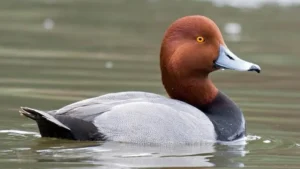
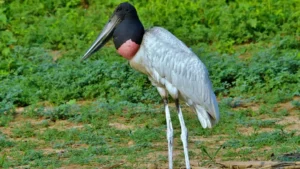
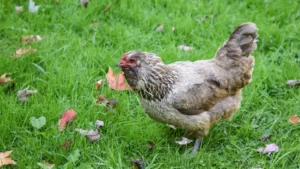
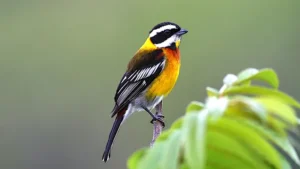

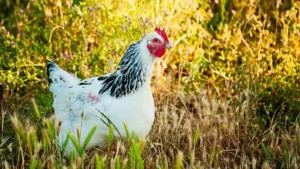
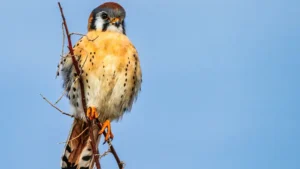
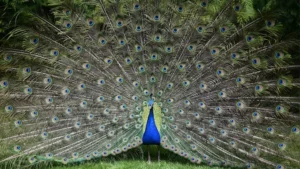
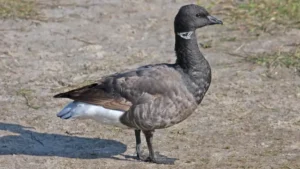
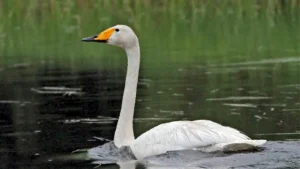
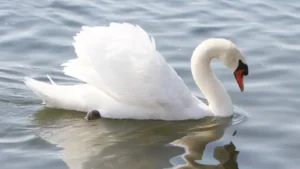
Leave your comment